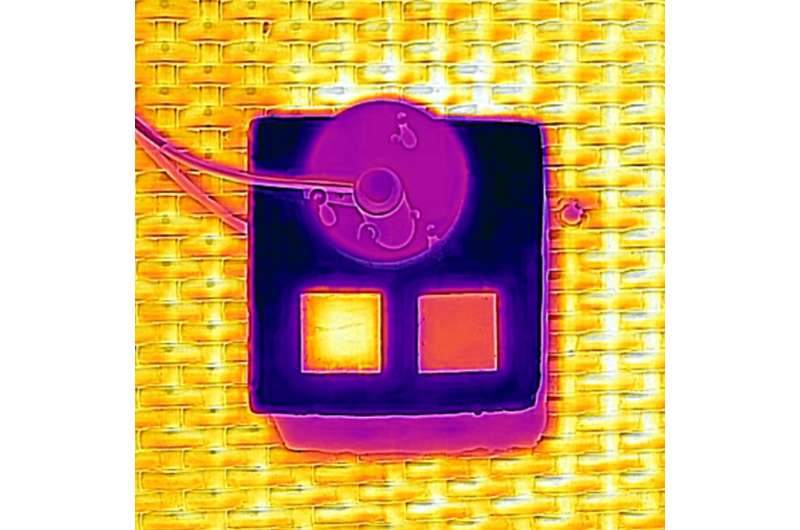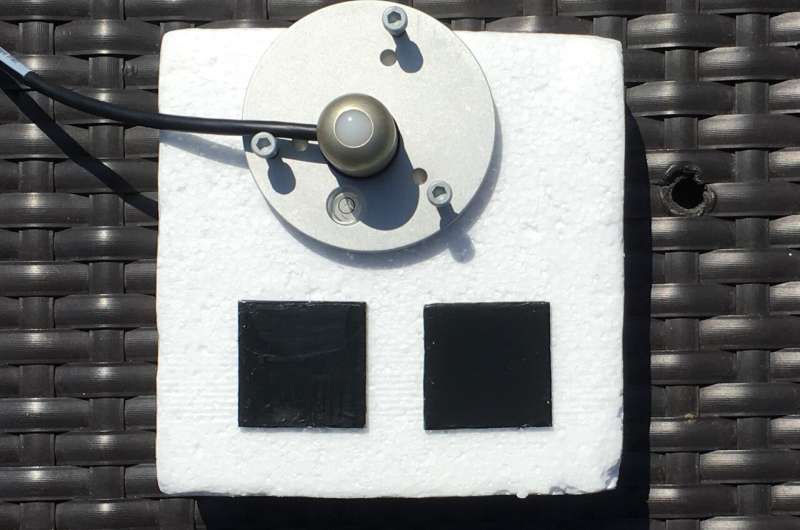The bilayer coating stays cooler under sunglight. Credit: Jyotirmoy Mandal
A team of researchers from Columbia and Howard Universities in the U.S. and Peking University in China has developed a kind of colored double-layered paint that reflects heat. In their paper published in the journal Science Advances, the group describe their paint and possible uses for it.
When it comes to painting buildings in hot parts of the world, designers have two basic choices: white (or silver), or other colors that tend to absorb heat. In many cases, designers shy away from white or silver colors because of the glare it creates, instead choosing darker colorst that result in huge air-conditioning bills. In this new effort, the researchers have developed a type of dual-layer paint that allows for painting buildings in visually appealing colors while gaining the heat-deflecting advantages of a silver or white paint.
The new paint achieves this feat by using two distinct layers. The bottom layer—the one that touches the surface—is made of a material similar to Teflon. It reflects infrared light away from the building. It is approximately 500 micrometers thick and is porous with interconnected micro- and nanopores. The coat above it—the visible one—is made similarly to other paints. It absorbs certain wavelengths of light that make it look like a certain color. With ordinary sunlight, most of the heat is in the infrared light.
Together, the two layers of the new paint allow it to behave as a white or silver paint—without the glare. In testing the paint, the researchers found that an object painted black, normally the most heat-absorbing color, had an internal temperature that was 16°C cooler than a similar untreated object. They also found that the paint was durable enough to withstand hostile environmental conditions—it held up after being placed in an oven at 60°C for 30 days.
Both the monolayer and bilayer coatings have near-ideantical colors. Credit: Jyotirmoy Mandal
Heat-reflective paint could be useful in desert or tropical locations where it rarely gets cold, though not so much in the northern hemisphere—people want their buildings to absorb heat when it is cold outside. The researchers are next looking toward a way to capture the heat that is reflected by their paint and harvesting it as an electricity-generating source.
More information: Yijun Chen et al. Colored and paintable bilayer coatings with high solar-infrared reflectance for efficient cooling, Science Advances (2020). DOI: 10.1126/sciadv.aaz5413
Journal information: Science Advances
© 2020 Science X Network

























